Email Marketing for E-Commerce: Strategies That Drive Sales
April 19, 2025
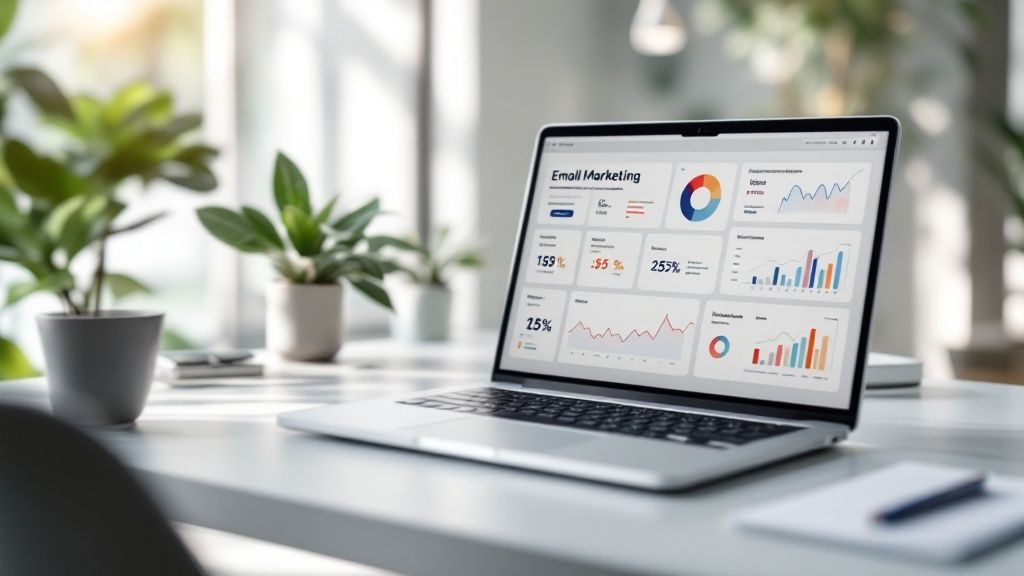
Why Email Marketing Remains the E-Commerce Powerhouse
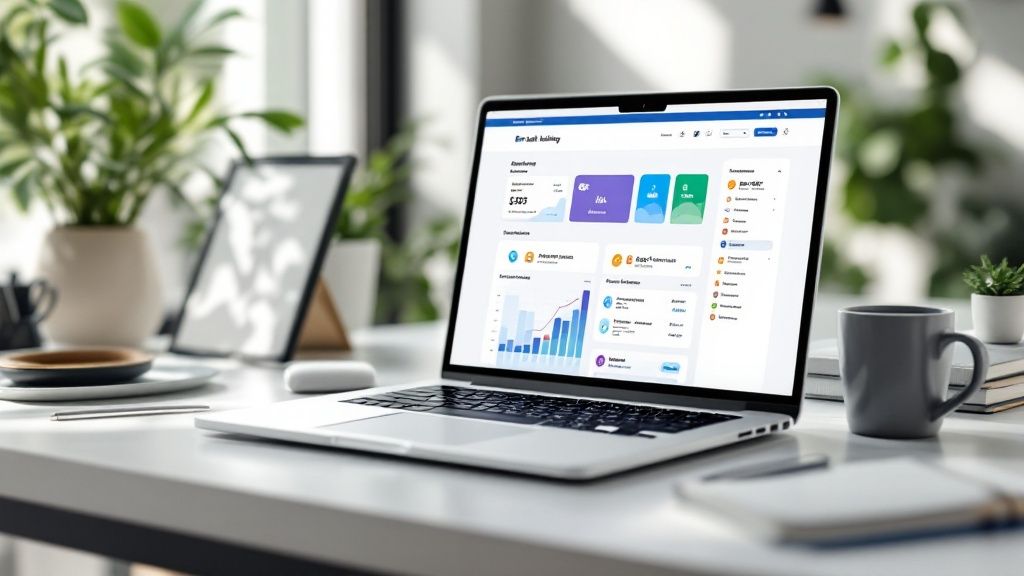
In the competitive world of online retail, new marketing approaches appear all the time. While it's tempting to chase the latest trends, one method consistently delivers exceptional results for e-commerce: email marketing. Modern email marketing goes far beyond simple newsletters. Leading brands are strategically investing in email to boost revenue and cultivate lasting customer relationships.
The Undeniable ROI of Email
Why does email remain so effective? It offers a direct line to customers who have already shown interest in your products. This targeted approach builds stronger connections and promotes repeat business, unlike the often fleeting nature of social media engagement. For instance, a well-crafted abandoned cart email can recapture a potentially lost sale. This personalized touch reminds the customer of their interest and often provides an incentive to complete the purchase.
This impressive ROI is backed by hard data. Email marketing is one of the most profitable channels for e-commerce, with revenue projected to exceed $9.5 billion in 2024. For every dollar spent, e-commerce marketers generate an average of $40 in revenue, a 3900% ROI. E-commerce sites receive approximately 9% of their total website traffic from email marketing campaigns, showing how these emails drive both income and user engagement. Statista offers further insights into these trends. Among the top 1,000 online retailers, 96% consider email marketing the channel with the best ROI. The deliverability rate for e-commerce emails is also high, around 96%.
Beyond the Newsletter: Modern Email Strategies
Today's successful e-commerce email marketing uses a variety of tactics.
- Personalized welcome series: Introduce new subscribers to your brand and guide them towards their first purchase.
- Abandoned cart emails: Recover lost revenue by reminding customers of items left in their cart, often with an incentive to complete the purchase.
- Post-purchase sequences: Nurture customer relationships by providing valuable information, recommending related products, and encouraging repeat purchases. This maximizes the value of each customer interaction.
Building Relationships, Not Just Sending Emails
The key to successful email marketing is building relationships. By segmenting your audience based on purchase history and browsing behavior, you can deliver highly relevant content. For example, a customer who regularly purchases organic skincare products will respond better to targeted emails about new natural beauty launches than generic promotions. This personalized approach strengthens customer relationships and boosts conversion rates. By understanding your audience, you can create email campaigns that feel like personal recommendations, not intrusive advertisements. This fosters loyalty and drives long-term growth.
Crafting Your E-Commerce Email Strategy Blueprint
Building a successful email marketing program for e-commerce requires a strategic approach. It's more than just sending occasional newsletters. It's about understanding your target audience, segmenting your email list, and delivering the right message at the right time, tailored to your specific business model and customer journey.
Understanding Your Customer Journey
The first step in any effective email strategy is mapping the customer journey. Consider all the touchpoints a customer has with your brand, from their initial discovery all the way to post-purchase engagement. This helps identify key opportunities to connect with them via email at each stage.
For example, a welcome email greets new subscribers and sets the tone for your brand communication. Post-purchase emails can offer product care tips, encourage repeat purchases, or request reviews.
The Power of Segmentation: Treating Customers as Individuals
Segmentation is the process of dividing your email list into smaller, more targeted groups. This is based on factors like demographics, purchase history, and website behavior. Segmentation allows you to personalize emails and deliver highly relevant content.
Instead of generic email blasts, you can tailor messaging for specific customer segments. Customers who frequently purchase high-end items might receive exclusive offers on premium products. Budget-conscious shoppers could receive alerts about sales and discounts.
Balancing Promotional and Value-Driven Content
Promotional emails are essential for driving sales. However, providing value to your subscribers is equally important. This means offering helpful content such as product guides, educational resources, or exclusive behind-the-scenes looks.
This approach builds trust and strengthens your brand image, encouraging long-term customer loyalty. For more information on email's effectiveness, see this article on email marketing for lead generation. A good rule of thumb is to aim for a balance of 80% value-driven content and 20% promotional content.
Creating a Sustainable Content Calendar
Consistency is key for successful email marketing. It's essential to create a content calendar that's manageable for your team. Start by outlining key promotional periods, product launches, and seasonal events.
Then, fill in the gaps with valuable content that aligns with your brand and resonates with your audience. Consider using resources like this guide on How to master email marketing best practices and boost ROI. This ensures a consistent flow of engaging emails without overwhelming your team.
Testing and Optimization: The Key to Continuous Improvement
Email marketing is a continuous process of testing and optimization. Experiment with different subject lines, email layouts, and calls to action. See what resonates best with your audience and track key metrics.
Monitor open rates, click-through rates, and conversion rates to measure your success. This data-driven approach allows you to refine your strategy and maximize your ROI.
Example E-commerce Email Strategy Framework
The table below provides a structured approach to building your email marketing program based on your business maturity and goals.
| Business Stage | Primary Email Focus | Key Email Types | Recommended Frequency | Success Metrics |
|---|---|---|---|---|
| Launch | Building an audience and driving initial sales | Welcome series, product announcements, early bird discounts | 1-2 emails per week | List growth, open rates, conversion rates |
| Growth | Increasing customer lifetime value and repeat purchases | Personalized product recommendations, loyalty program emails, post-purchase follow-ups | 2-3 emails per week | Repeat purchase rate, average order value, customer lifetime value |
| Maturity | Maintaining engagement and driving continued growth | Exclusive content, early access to sales, personalized offers based on purchase history | 1-2 emails per week | Customer retention rate, engagement metrics, revenue per email |
A well-defined email marketing strategy can transform your email list into a powerful engine for e-commerce growth. Remember that successful email marketing is not about overwhelming your subscribers with promotions. It's about building meaningful relationships that drive long-term loyalty and sustainable revenue.
Revenue-Generating Email Campaigns That Actually Convert
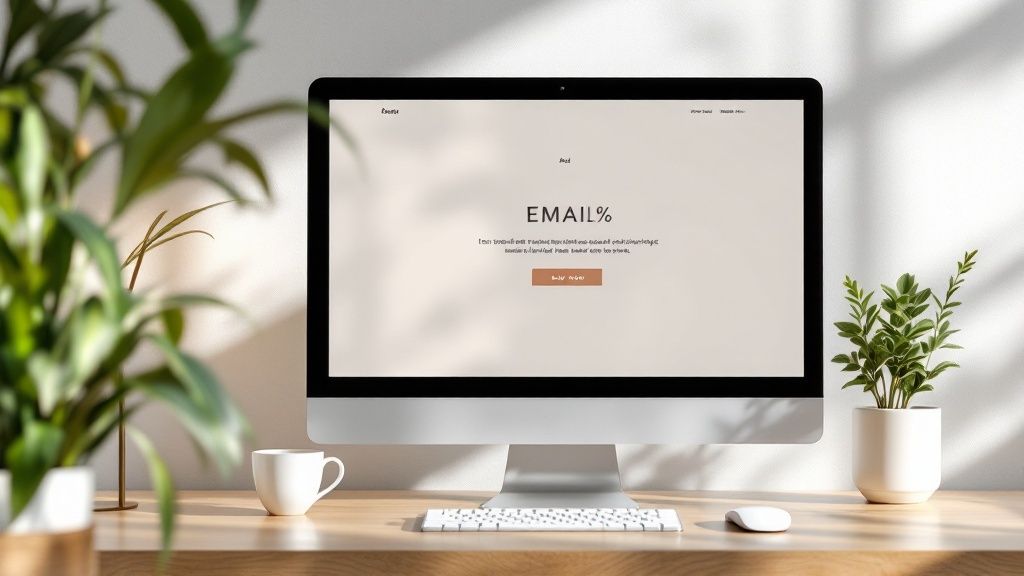
Now that we understand the importance of a solid email marketing strategy, let's explore specific email campaigns that consistently drive conversions for e-commerce businesses. These campaigns are essential tools for guiding customers through the sales funnel and maximizing revenue.
The Welcome Series: Making a Great First Impression
The welcome series is your opportunity to greet new subscribers and build a foundation for a strong relationship. This automated sequence introduces your brand and encourages a first purchase. A discount code is a great way to incentivize immediate action.
- Email 1: The Warm Welcome. Thank the subscriber for joining, reiterate the value they'll receive, and offer a welcome discount.
- Email 2: Brand Storytelling. Connect with the subscriber by sharing your brand's story and mission.
- Email 3: Product Spotlight. Showcase best-selling products or highlight items relevant to the subscriber's interests.
- Email 4: Social Proof. Build trust and credibility by featuring customer testimonials or user-generated content.
Abandoned Cart Emails: Recapturing Lost Revenue
Abandoned cart emails are crucial for recovering potentially lost sales. These messages remind shoppers about items left in their cart and encourage them to complete the purchase. A time-limited discount or free shipping offer can often seal the deal.
- Email 1: The Gentle Reminder. Sent within an hour of cart abandonment, this email simply reminds the customer about their items.
- Email 2: The Incentive. Sent 24 hours later, this email offers a discount or free shipping.
- Email 3: Scarcity and Social Proof. Sent 72 hours later, this email highlights low stock or positive reviews. Creating a sense of urgency encourages action. Tools like Checkout Links streamline the process.
Post-Purchase Emails: Building Loyalty and Driving Repeat Business
Post-purchase emails are a valuable opportunity to build customer loyalty and encourage repeat business. Use these emails to thank customers, provide product information, offer personalized recommendations, and request reviews.
- Email 1: Order Confirmation and Gratitude. Confirm the order and thank the customer.
- Email 2: Product Care and Tips. Enhance the customer experience by providing helpful tips and tricks.
- Email 3: Related Product Recommendations. Suggest other products the customer might enjoy.
- Email 4: Request for Review and Feedback. Encourage customers to leave reviews, which can influence future purchases.
Other Revenue-Generating Campaigns
Several other email strategies can effectively drive revenue. Seasonal promotions capitalize on holidays and events. Flash sales create urgency, and back-in-stock notifications satisfy customer demand. By the end of 2024, the global email user base is projected to reach 4.6 billion users. Find more detailed statistics here. Automated emails have open rates around 45%, and 61% of people prefer promotional content via email.
The table below shows a comparison of various email campaign types and their performance based on industry benchmarks.
High-Converting E-commerce Email Campaigns
| Campaign Type | Average Open Rate | Average Click Rate | Average Conversion Rate | Revenue Impact |
|---|---|---|---|---|
| Welcome Series | 50-60% | 5-10% | 2-5% | High |
| Abandoned Cart Emails | 40-50% | 10-15% | 5-10% | Medium |
| Post-Purchase Emails | 30-40% | 5-10% | 2-5% | Medium |
| Seasonal Promotions | 20-30% | 2-5% | 1-3% | Low |
| Flash Sales | 30-40% | 5-10% | 3-5% | Medium |
| Back-in-Stock | 50-60% | 15-20% | 10-15% | High |
By implementing these diverse email campaigns, e-commerce businesses can generate revenue and cultivate customer relationships. Delivering value, personalizing the experience, and optimizing based on data are key to success.
Advanced Personalization That Drives Double-Digit Growth
Basic personalization, like using a customer's first name in an email, is a good starting point for e-commerce marketing. However, true email personalization goes much deeper. It leverages customer data to create highly relevant experiences that resonate and drive conversions. Leading online retailers are using this strategy to boost sales significantly.
Behavioral Segmentation: The Foundation of Personalized Email
Behavioral segmentation moves beyond basic demographics. It groups customers based on their actions and interactions within your online store. This allows for a more focused approach to email marketing, providing content that feels individually curated.
-
Purchase History: A customer's purchase history reveals valuable insights into their preferences and needs. For example, someone frequently buying running shoes likely appreciates information on new athletic wear.
-
Browsing Behavior: Tracking viewed products online provides a glimpse into current customer interests. This data can trigger personalized emails showcasing similar products or offering discounts on previously viewed items.
-
Engagement Patterns: Customer interactions with your emails (opens, clicks, and conversions) indicate their level of interest. Highly engaged subscribers may receive exclusive offers and early access to sales. Less engaged subscribers could benefit from re-engagement campaigns. Services like Checkout Links offer robust behavior tracking via UTM parameters, enabling effective segmentation and personalized follow-up.
Dynamic Content: Tailoring Emails Without Complex Coding
Dynamic content allows you to create a single email template that adapts to each recipient's individual preferences. This eliminates the need for multiple separate emails for different customer segments. Imagine a single email displaying different product recommendations based on individual browsing history. That's the power of dynamic email content.
Conditional logic can adjust email content based on specific customer data. For instance, if a customer abandons their cart, the email could dynamically display the abandoned items and offer an incentive to complete the purchase. This personalized approach can dramatically improve conversion rates.
Real-World Examples: Personalization in Action
Many e-commerce brands have achieved remarkable results through personalization. An online clothing retailer, for example, might send personalized recommendations based on past purchases. If a customer previously bought a particular dress style, the email could suggest similar dresses or complementary accessories. This targeted approach often leads to higher click-through rates and more conversions.
Another example is an online bookstore using dynamic content to display book recommendations based on a customer's reading history. This creates a personalized shopping experience, encouraging customers to explore more titles and ultimately increasing sales.
Balancing Personalization With Privacy: Building Trust and Loyalty
While personalization relies on data, respecting customer privacy is paramount. Be transparent about data collection and usage practices. Offer customers control over their communication preferences. Building trust is crucial for long-term customer loyalty.
When customers feel their privacy is valued, they are more likely to engage with your brand and make repeat purchases. This responsible approach to personalization strengthens customer relationships and drives business growth. By combining personalization strategies with tools like Checkout Links, businesses can achieve double-digit growth while maintaining customer trust and loyalty.
Mastering Deliverability: Ensuring Your Emails Reach Buyers
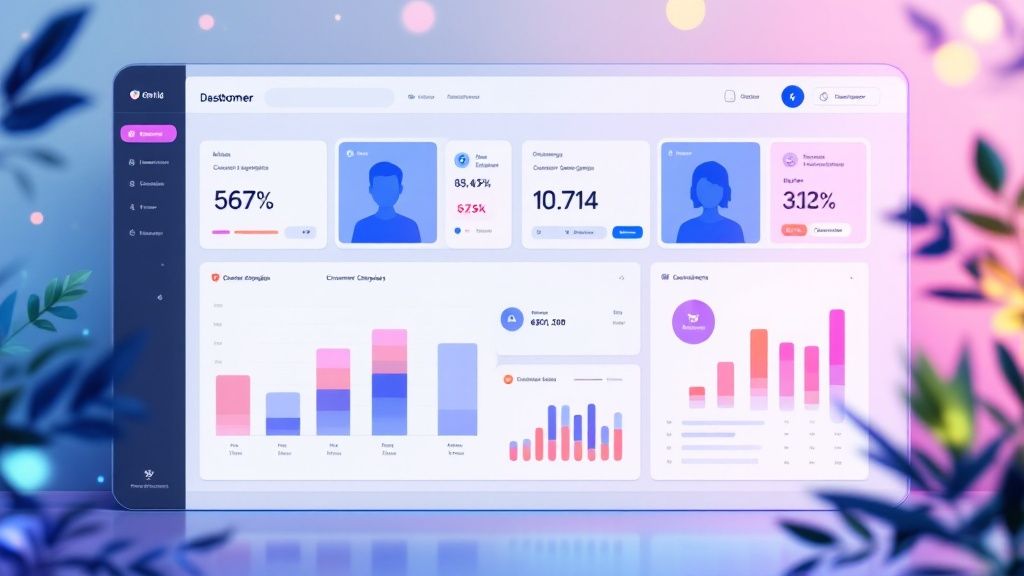
Even the most carefully planned e-commerce email marketing campaign won't work if it doesn't reach your customers' inboxes. Therefore, understanding deliverability, the process of getting your emails past spam filters, is essential. This section simplifies complex deliverability concepts into actionable strategies.
Understanding Email Authentication: SPF, DKIM, and DMARC
Think of email authentication as a digital signature verifying the sender. Email providers use it to confirm an email's legitimacy, a key factor in determining whether it reaches the inbox or spam folder. Three main protocols make this happen: SPF (Sender Policy Framework), DKIM (DomainKeys Identified Mail), and DMARC (Domain-based Message Authentication, Reporting & Conformance).
-
SPF specifies which mail servers can send emails from your domain. It's like giving your email provider a list of approved senders.
-
DKIM gives each email a unique, encrypted signature that the receiving server can verify. This confirms the email's authenticity and that it hasn't been altered.
-
DMARC combines SPF and DKIM, instructing email providers on handling emails that fail authentication. You can choose to reject, quarantine, or deliver suspicious emails.
Using these protocols significantly improves your sender reputation and increases inbox placement.
Maintaining a Healthy Email List: The Importance of List Hygiene
Your email list is a valuable resource that needs regular upkeep. List hygiene means keeping your list current by removing inactive or invalid addresses. This improves deliverability and provides more accurate performance data.
Regularly cleaning your list of bounced emails and inactive subscribers prevents your emails from being marked as spam. For instance, remove subscribers who haven't opened emails in six months. However, before removing them, try a re-engagement campaign. You might find this helpful: How to increase your email open rates. A healthy list improves sender reputation, leading to better inbox placement and overall effectiveness.
Crafting Spam-Proof Content: Avoiding Common Triggers
Authentication and list hygiene are vital, but email content also matters for deliverability. Certain words or phrases trigger spam filters, so craft messages with care. Avoid overusing exclamation points, all caps, and words like "free," "guaranteed," or "make money fast."
Provide valuable content and engaging subject lines. E-commerce email marketing benchmarks offer insights into deliverability. Data shows inbox placement rates differ by country: 84.6% in the US and 90% in Canada. Find more detailed statistics here. This demonstrates the importance of understanding regional email filtering practices. Focus on value and avoid spam triggers to improve inbox placement and engage your audience.
Measuring What Matters: E-Commerce Email Analytics
Stop chasing vanity metrics like open rates and clicks. While these can offer a glimpse into engagement, they don't tell the whole story of your email performance. This section explores how to measure what truly matters for your e-commerce bottom line: revenue and Customer Lifetime Value (CLTV).
Beyond Open Rates: Key Performance Indicators (KPIs) for E-Commerce
To truly understand the effectiveness of your email marketing, focus on KPIs aligned with your business objectives. These metrics provide actionable insights to optimize campaigns and boost profitability.
-
Conversion Rate: This measures the percentage of email recipients who complete a desired action, such as making a purchase. A high conversion rate signifies your emails are effectively driving sales.
-
Revenue Per Email: Calculate the average revenue generated for each email sent to understand the profitability of your email campaigns. This metric is a powerful indicator of your overall email marketing success.
-
Average Order Value (AOV): This measures the average amount spent per order generated from your email marketing efforts. Increasing AOV can significantly impact revenue. Tools like Checkout Links can be helpful in boosting AOV by offering personalized upsells and cross-sells within your email campaigns.
-
Customer Lifetime Value (CLTV): This crucial metric estimates the total revenue a customer will generate throughout their relationship with your brand. Email plays a vital role in nurturing these relationships and increasing CLTV.
-
List Growth Rate: A growing email list expands your reach to potential customers. Focus on acquiring engaged subscribers rather than simply accumulating a large number of inactive email addresses.
Attributing Sales Across Complex Customer Journeys
Customers often interact with your brand through various channels before making a purchase. Accurately attributing sales to email marketing can be a challenge, especially when customers click an email link but don't buy immediately. However, platforms like Checkout Links, which allow tracking through UTM parameters, can help you more effectively track these complex customer journeys from click to purchase.
For example, Checkout Links facilitates the creation of unique shoppable links for different email campaigns. By analyzing the performance of these individual links, you can directly attribute sales to specific emails and measure their true ROI.
Setting Up Effective Tracking Systems
Setting up effective tracking doesn't require complex enterprise-level resources. Tools like UTM parameters and Google Analytics can effectively track essential metrics like website traffic, conversions, and revenue generated from email campaigns.
UTM parameters allow you to tag links in your emails, enabling you to identify the specific campaign or email responsible for each visit and purchase. This data provides valuable insights into which email strategies are most effective.
Creating Meaningful Reports: Demonstrating the Impact of Email
Meaningful reports clearly demonstrate the influence of email marketing on your e-commerce business growth. These reports should present key metrics and insights in a clear and concise manner to inform strategic decision-making.
| Metric | Description | Target |
|---|---|---|
| Conversion Rate | Percentage of email recipients who make a purchase | >2% |
| Revenue Per Email | Average revenue generated per email sent | >$0.50 |
| Average Order Value (AOV) | Average amount spent per order | Increase by 10% |
| Customer Lifetime Value (CLTV) | Total revenue generated by a customer | Increase by 20% |
| List Growth Rate | Percentage increase in email subscribers | 5-10% per month |
These reports can showcase the success of your email campaigns, demonstrating the ROI of your email program and guiding future resource allocation. For example, consistently high-performing abandoned cart emails might justify allocating more resources to optimizing and expanding those specific emails.
By focusing on the right metrics and implementing robust tracking systems, you can unlock the true potential of email marketing for your e-commerce business. This data-driven approach ensures your email efforts contribute directly to your bottom line and foster lasting customer relationships.
Future-Proofing Your E-Commerce Email Program
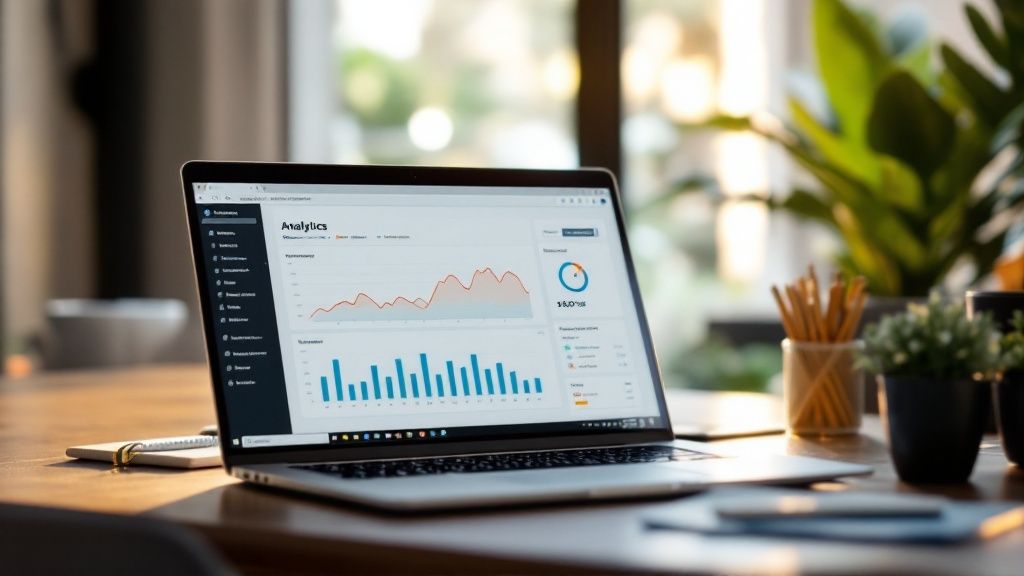
The e-commerce world is constantly evolving. To stay competitive, your email marketing strategies must adapt to the newest trends and technologies. This section explores how to future-proof your email approach, ensuring it remains effective and engaging in the dynamic online marketplace.
AI and Machine Learning: Personalization Without the Guesswork
Artificial intelligence (AI) and machine learning are changing the game in e-commerce email personalization. These technologies analyze large quantities of customer data, identifying patterns and preferences to deliver highly relevant content.
This personalization goes beyond simply using a customer's name. AI can predict product interests based on past browsing and purchase history. For example, if a customer regularly buys organic coffee, AI can trigger emails showcasing new organic coffee options or related products, such as fair-trade chocolate.
Implementing AI doesn't mean sacrificing the human touch. Instead, it enhances human creativity by providing data-driven insights. Think of AI as a powerful tool that helps create more effective, personalized campaigns. Services like Checkout Links can integrate with AI-powered platforms to automate this personalization, streamlining your email workflows.
First-Party Data: Building Stronger Customer Relationships
With growing concerns about online privacy, first-party data is essential for e-commerce businesses. This data, collected directly from customer interactions on your website and email campaigns, allows for personalized marketing without relying on third-party cookies.
Building a robust first-party data strategy involves several key elements:
-
Transparent Data Collection: Openly communicate how customer data is collected and used. Building trust is crucial.
-
Offering Value in Exchange for Data: Provide incentives like exclusive discounts or early access to sales in return for customer information.
-
Utilizing Data to Enhance the Customer Experience: Use collected data to personalize email content, product recommendations, and offers. For example, if a customer frequently browses a specific product category, tailor emails to highlight relevant new arrivals or special discounts.
Interactive Email Design: Creating Immersive Experiences
Email design has moved beyond static images and text. Interactive email elements create immersive experiences directly within the inbox, increasing engagement and conversion rates. Here are a few examples:
-
Shoppable Carousels: Allow customers to browse and purchase products directly within the email.
-
Embedded Surveys and Polls: Collect valuable feedback and understand customer preferences.
-
Interactive Games and Quizzes: Gamify the email experience to encourage higher click-through rates.
-
Animated GIFs and Videos: Capture attention and convey information dynamically.
Checkout Links enables you to incorporate interactive elements, including shoppable links, directly within your email campaigns. This allows for in-email purchases without redirecting customers to a separate webpage, maximizing conversion opportunities.
Integrating Email With Emerging Channels
Email marketing doesn't exist in isolation. Future-proofing your strategy means integrating email with other channels like SMS marketing and social media. Create cohesive customer journeys across multiple platforms, reinforcing your brand message and driving consistent engagement. For instance, use email to promote a new product launch and then follow up with targeted SMS messages offering exclusive discounts to those who clicked through the email.
By embracing AI, prioritizing first-party data, designing interactive experiences, and integrating with other channels, you can ensure your e-commerce email marketing remains relevant, engaging, and effective in driving sales.
 Checkout Links
Checkout Links



